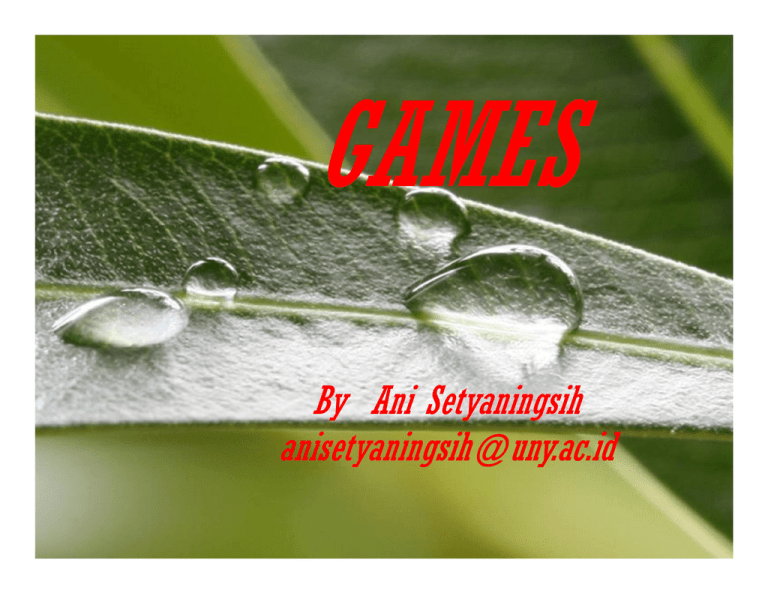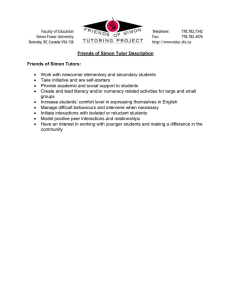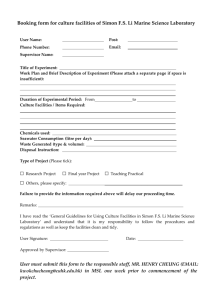GAMES By Ani Setyaningsih Page 1
advertisement

GAMES By Ani Setyaningsih anisetyaningsih@uny.ac.id Page 1 Page 2 Definition • Toth (1995 in Mei and Yu-Jung, 2000) defines a game as “an activity with rules, a goal and an element of fun.” • Richard et al (2002)“an organized activity that usually has the following properties: particular task or objective, a set of rules, competition between players, communication between players by spoken or written language.” • Brewster (2002) “game as a fun activity gives young learners the opportunity to practise the foreign language in a relaxed and enjoyable way.” Page 3 Benefits of games 1. Linguistic ~ Games provide opportunity to practice language item, fluency and accuracy ~ During the games, useful pronunciation, vocabulary and grammar practices may occur ~ Games utilize all four skills ~ The nature of games may encourage more creative use of language Page 4 2. Cognitive • A language game is a healthy challenge to a child’s analytical thought • It will enrich and extend children’s knowledge; to learn new things other than language. • Through games children may also reinforce and review their knowledge. • Games are potential to sharpen all of the intellectual skills abilities : ….to read and understand picture, table, diagram, rules, and instructions, ….to group, list, observe, distinguish, predict, determine cause and effect, compare, and draw conclusion. • boredom can be avoided and children’s attention span will be much longer. Page 5 3. Affective - Lower affective filter - Ensure a natural anxiety-free language learning environment - Raise students’ intrinsic motivation - Laugh, smile and happiness arise during the game help canalizing and stabilizing children emotion and energy - Children may also get their self confidence and measure their current ability and compare their ability with their friends (self concept) - Children can learn to handle or cope with conflict - They learn how to compete fairly and learn to be honest Page 6 4. Socio-cultural • Most games require choral responses or group works, so they help children in developing their social skills • The children may learn how to share responsibility, take role, and interact with others. • They learn how to express opinion, listen to friend’s opinion and respect friend’s opinion or decision. • Children can learn that the world is governed by several rules. • Healthy cooperation and competition can be promoted in the class. So, games also build class cohesion and fosters whole class participation Page 7 Types of Games • Accuracy-focused games (language control) ~ Aims to practise new language items and develop accuracy • Fluency-focused games (communication) ~ Focus on developing fluency and collaboration with others • Competition or cooperation? Page 8 How to Play Games • Selecting games ~ proficiency level, number of students, students’ age, topics, time allocation • Giving Instructions ~ short, clear, simple, limited numbers of key words • Organizing the class ~ teams, groups, or pairs? • Playing the game ~ emphasize the language they need to play the game • The teacher’s role ~ observer, listener, facilitator, problem solver Page 9 Game-playing Terms • • • • • • • • • • • It’s my/your turn Whose turn is it? You’re out Roll the dice Shuffle the cards Take… Give… Wait…. Don’t peek No cheating Line up • • • • • • • • • • • Shut your eyes Pass the…. Spin the… Discard the…. On your mark Get set Go Make a circle We win! The winner is… Turn around Page 10 Tips in Conducting Games 1. The teacher should make sure the time and the space 2. The teacher needs to make sure that children understand the rules by simplifying and repeating the instruction, giving example and modelling 3. Teachers should not use games as the only lesson activity 4. Games must be suitable to children’s language level and must have learning objective 5. Games should keep all children involved and interested 6. End the game when the fun is still at its peak Page 11 Kinds of Games Collaborative games Board games Card games Drawing games Guessing games Role-play games Word games Movement games Page 12 Example 1: Guessing games Rules: Now, let’s play the guessing games. I will divide you into groups of four. Each of you will receive a card containing a picture/ name of animal. You must describe your animal to your friends so they can guess what animal you have. Remember, do not say the name until your friends cannot guess it. Do it in turns. (changeable topics) Example: You receive a card containing the words Elephant. You may say; • I have four legs. • I have two small eyes. • My body is very big. • I have a long trunk. • I am about three meters high. • Can you tell me who I am? Page 13 Example 2 : Simon says games • You must choose a ''Simon'' among your students • - Simon is responsible for calling out an action and children must follow it. • If Simon says '' Simon says; Touch your nose'' , students must touch their nose. • But, if Simon says '' Touch your nose'' Whoever does it, loses the game and has to be the next Simon. Page 14 Example 3: Chained Whisper games • Students make two or three lines. • Once the teacher or student whispers something to one of the group members, s/he should then whisper it to a friend in front of him. • Finally, the last student has to shout/write/act out/ take the word (depends on the teaching objectives) • Scoring: a group will score 100 if the whole members do the right steps and firstly finish the task . Page 15 Example 4: Survey Games • Instruction: • Go around the class. Ask 6 of your friends about the information you need. Get back to your chairs if you have done it. Page 16 Find someone who: 1. Likes bananas 2. Likes Spongebob 3. Likes dangdut 4. Whose mother’s name starts with Y 5. Likes Mr. Bean 6. Was born in November Page 17 Theme-based games • Introduction ~ zip zap, toss ball • Alphabet ~ Whose name?, I spy with my little eyes. • Number ~ one, two, three bush, Grouping • Colors ~ I spy with my little eyes, Color Flag race • Parts of the Body ~ Simon Says, Drawing Monster, Page 18 WORKSHOP 1. Divide the class into 4 groups. 2. Give each one a game to play. 3. The game should suit the class (the space, number of the students, students’ proficiency, age). 4. The group should learn the game, think of the skill taught, the objective and the class level, and will play the game with the entire class for max. 20’. 5. Each group should make at least two recordings on the preparation and practice. 6. The assessment will be on the teamwork, the clarity of the instructions, the suitability of Page 19 the game and the children level.



